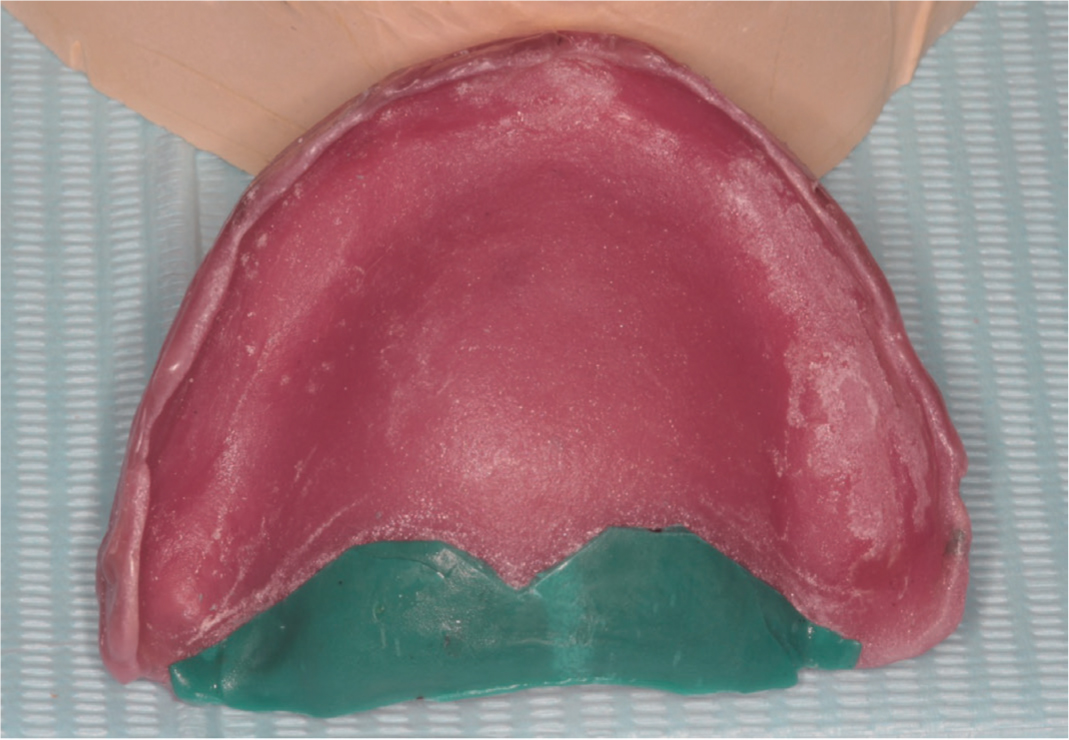Article
Denture retention is one of the most important denture aspects in an edentulous patient's satisfaction and treatment acceptance. It is related to prosthesis security during socialization as well as comfort during eating and speaking.1,2 Complete denture retention relates to several physical and oral factors such as adhesion and cohesion forces, interstitial pressure, border seal, neuromuscular control and gravity.3 The posterior palatal seal (PSS) ‘is the soft tissue area at or beyond the junction of the hard and soft palates on which pressure, within physiological limits, can be applied by a denture to aid in retention’.4 PSS is particularly considered a prime factor for optimum maxillary denture retention, and its loss can significantly compromise the overall retention of the denture.3 Maxillary denture bases can become loose owing to acrylic shrinkage and base elevation in the mid-palatal region, leading to a loss of the PSS.5 This can be problematic with temporary bases during the critical stages of jaw-relation and try-in, as well as being disappointing with permanent bases when the denture is finally inserted.
In this quick clinical tip, a temporary denture base had adequate distal extension when examined on the cast and inside the patient's mouth, but had an inaccurate border seal related to an inadequate PSS. Loss of posterior denture base retention was confirmed by the presence of a gap between the base and the master cast (Figure 1), as well as clinically, by the loss of grip/retention when the base was tested by posterio-anterior rotation (Figure 2).


Green stick compound impression material was softened by flame using a torch and traced on its designated area on the denture base fitting surface (Figure 3).

Green stick impression material was tempered before insertion and securing inside the patient's mouth. Once cooled and set, excess was trimmed and the base was inspected for provision of a seal. The matt appearance of the additive impression material confirmed positive tissue adaptation (Figure 4).

Regaining the posterior palatal seal was immediately evident when re-tested by denture rotation and overall, the denture retention was significantly improved. This simple technique tip is quite helpful in stabilizing temporary denture bases, since they are known for their poor retention. It is particularly important when wax rims are being modified during jaw relation, as well as when phonics and aesthetics are being examined during the denture trial visit.
Permanent bases are usually more retentive given the carving of the post dam region on the master cast, and the reduced percentage of base material polymerization shrinkage. Nevertheless, sometimes permanent bases can be loose. In these cases, this technique can be useful as a diagnostic tool to test the PPS. If an inadequate PPS is confirmed, the above described green stick impression is carried out on the distal end of the permanent base to compensate for the polymerization shrinkage. Once a clinically effective PPS is re-established with the compound material, the modified base with green stick impression is transferred to the dental laboratory where a technician can duplicate it in acrylic for post dam re-establishment and PPS improvement.

